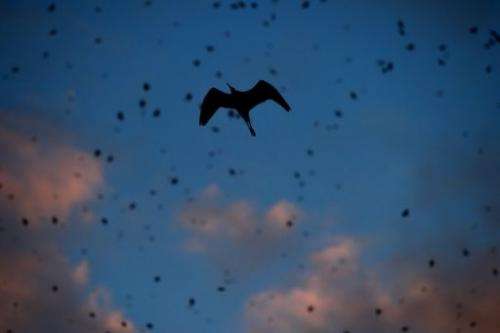Light-and-sound attacks used against Rome's starlings

Tired of bird droppings on the city's most famous monuments, local authorities in Rome are resorting to unusual measures to try and scare off a million starlings that migrate to the Eternal City every year.
Armed with loudspeakers and light projectors, workers dressed in white overalls and masks have been seen walking around at sunset along the tree-lined embankments of the Tiber River where starlings tend to congregate.
The loudspeakers blast out shrieks of alarm used by the starlings and the projectors are shone into the trees to scare off the birds.
"Their reaction is immediate," city hall said in a statement on Friday.
"The starlings abandon the area and get as far away as possible from the area, which they consider dangerous," it said, adding that the method "respects the environment and the birds and does not create a nuisance for residents."
The sound-and-light attacks last around an hour and are always carried out at dusk for three days in a row to ensure the desired effect.
Rome has the highest number of starlings in Italy—around a million are estimated to migrate there every autumn and winter.
(c) 2012 AFP
















